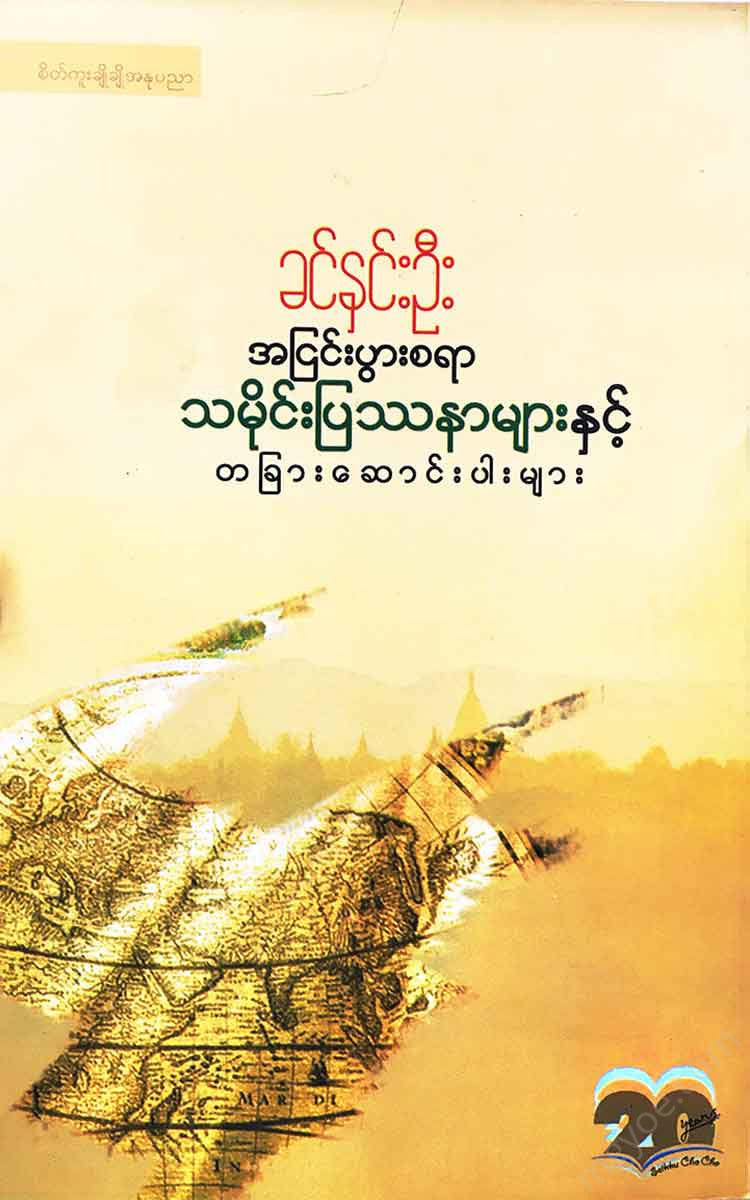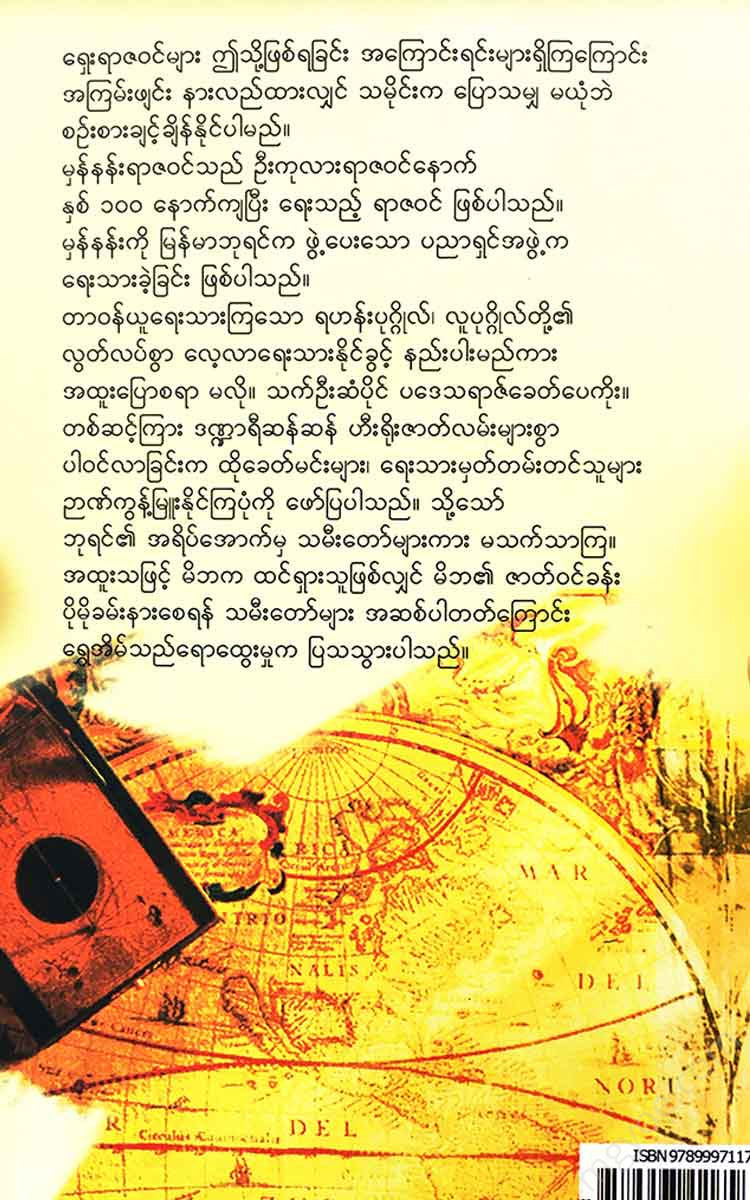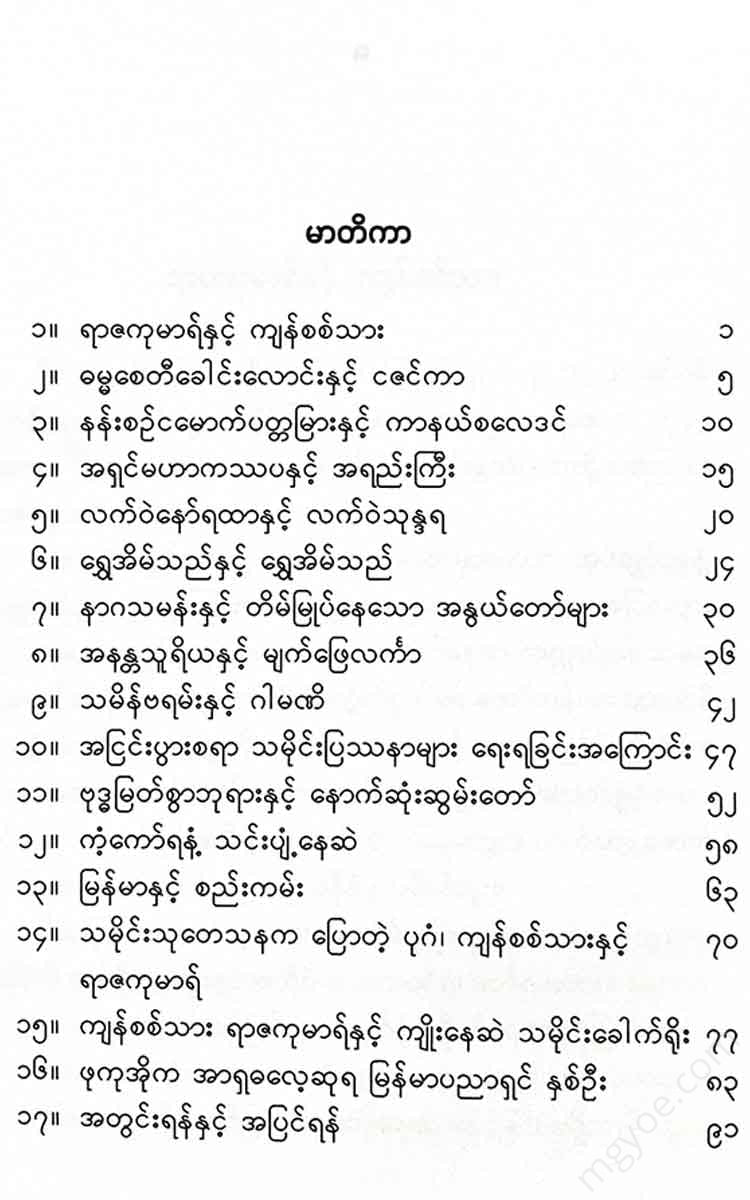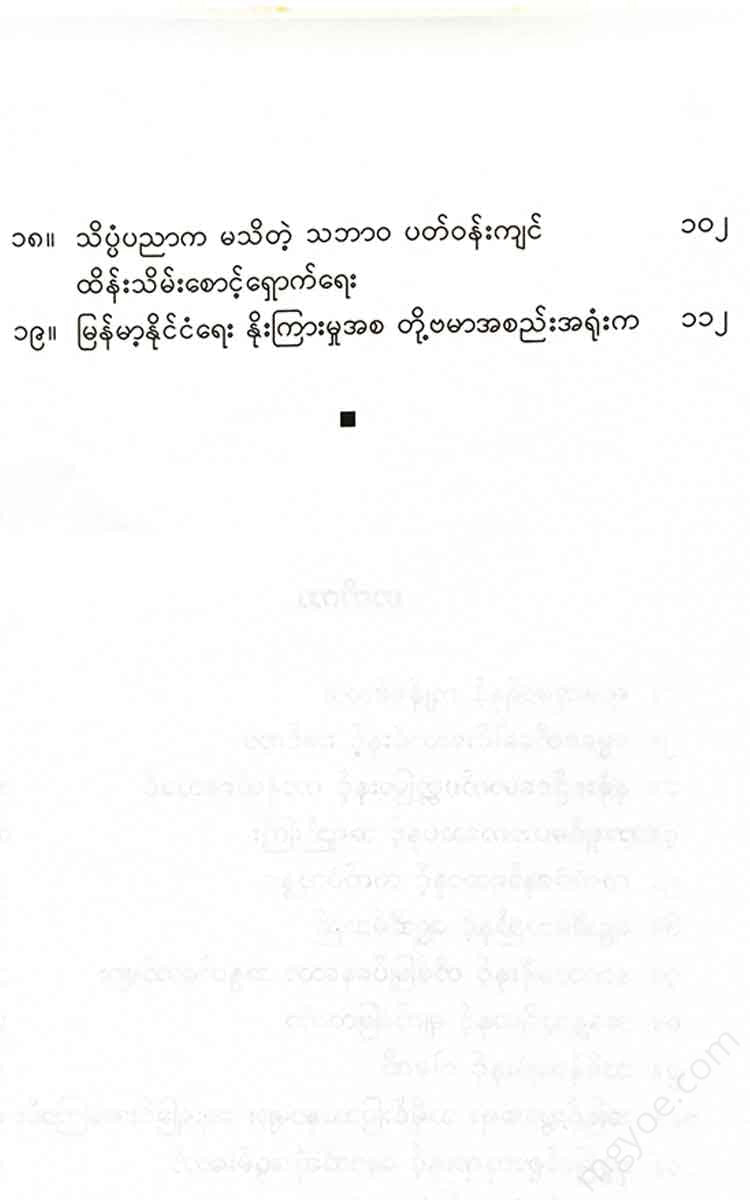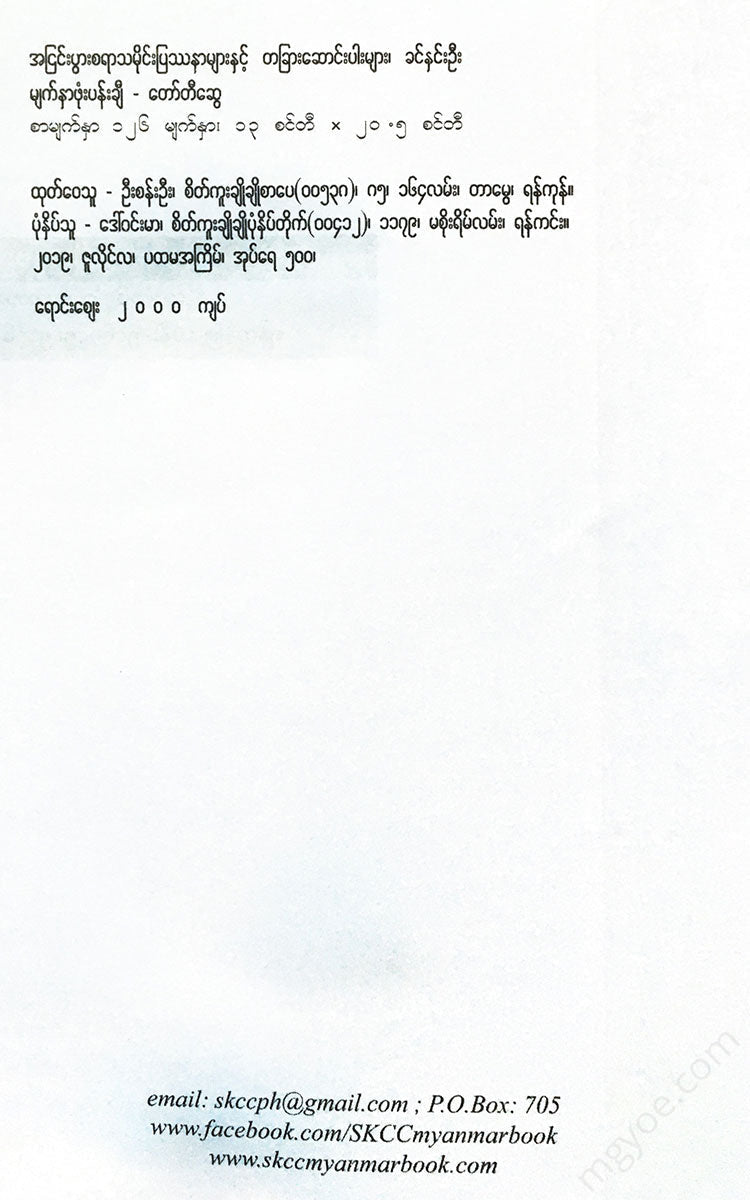စိတ်ကူးချိုချိုစာပေ
Khin Hnin Oo - Controversial historical issues and other articles
Khin Hnin Oo - Controversial historical issues and other articles
Couldn't load pickup availability
Rajakumar and the other soldiers
The subject we call 'history' today was written about in ancient times as history. History comes from the Pali word rajavamsa, which means about the dynasty, the kings.
Even in our modern era, some issues between the rulers and the ruled are controversial. For example, in the case of the bombing of the University Union Building on July 8, 1962, the Revolutionary Council government and the successive military governments that took over from it have not been clear why the bombing was carried out. There is no clear statement as to who ordered the bombing or who actually carried out the bombing.
At this time, we only hear and read about those who were part of the Revolutionary Council government, each passing one by one. The writers also write with their own opinions.
Even in this present era, when everyone has access to this information, it is impossible to accurately describe and write the history of a country, so it is difficult to say which side of the story is accurate and how reliable the historical facts written hundreds of thousands of years ago are.
So historians and other scholars conduct research and reexamine the history written in the past. When the historical facts that we Burmese generally know are at odds with the findings of scholarly research, a conflict arises between those who are conservative and those who accept the new research.
The recent Dhammazedi Bell Rescue Project has led me to think that if the information in ancient chronicles is wrong or unreliable, not only researchers but also ordinary people need to be made aware of it.
I also came to the idea that we should include the discrepancies found in the history taught in school curricula through research.
Even in today's technological age and the so-called democratic era, people still try to hide the truth, so the history written during the era of the autocratic kings, when the history of ancient kings was written, would certainly contain errors.
Most Burmese consider Kyansittha and Rajakumara to be father and son. Kyansittha did not abdicate the throne to his son Rajakumara, but to his grandson Alaungsittha. Rajakumara, who was generous and grateful, was not upset by this, and when his father, Kyansittha, was dying, he made a golden statue of him to be offered to his father, and the Burmese accepted this as a gift to his father. The chronicles also record this.
The story of the remaining soldiers and Rajakumar was written in the Burmese calendar in 1729 (U Kula Maharajin) and 1829 (Thamnan Rajin). The year in which the Rajakumar inscription (Myazedi inscription) was inscribed was 1113.
History professor U Ni Tut points out in his book “Pagan Court Writings and Rajakumar” why this story is not mentioned even though there is a stone inscription (Rajakumar Stone Inscription 1113) in the chronicles written in 1729 and 1829.
Since 1886, historians and archaeologists have been studying and interpreting the Rajakumar inscription. In 1966, Pali scholar U Tint Lwin wrote an introduction to the Rajakumar inscription, and in 1968, “A Study of the Rajakumar Pali Inscription.”
In 1970, Pali assistant lecturer U Kyaw Shein wrote “The Problem of Rajakumar.” In 1966, Pali scholar U Tint Lwin wrote “A Study of the Rajakumar Pali Inscription” and in 1968, an introduction to the Rajakumar Inscription.
In 1970, U Kyaw Shein, a Pali assistant lecturer, wrote “The Problem of Rajakumar.” Scholars studied the Rajakumar inscription in detail, written in four languages: Pyu, Mon, Burmese, and Pali, and concluded that Kyansittha and Rajakumar were not father and son, but rather a king and a minister.
In 2003, Maung Pe Nge wrote a book called “History and Paradox” and wrote that Rajakumar was only a minister of King Kyansittha. King Kyansittha, as we know, did not give the throne to his son Rajakumar for the sake of Mon-Burmese friendship and abdicated the throne to his grandson Alaungsittha. He gave his daughter Shwe Ein Si in marriage to King Manuha’s brother Nagathaman. There were also articles that Alaungsittha was the son of Shwe Ein Hya.
Maung Pe Nge explained that the Shwe Ein Nya who married Saw Lu's son Saw Yun was the daughter of the remaining soldier, and the Shwe Ein Nya who married Naga Tha Mann was the daughter of Narapati Sithu.
Dr. Than Tun also showed the chronology and pointed out that when Rajakumar came to the remaining soldiers, Alaungsithu had not yet been born.
Saya U Ni Tut explained that the original Mizzima language word Rajkumar became Rajkumar in Burmese.
My younger brother also provided physical evidence that Kyansitthamin was the illegitimate son of Princess Vaithali.
The story of the grateful son Rajakumar and the remaining soldier has been lost in historical research for many years, and people have started to disagree with it. That's natural.
There are those who are offended and cannot accept the fact that Saya Maung Khin Min (Dhanuphu) wrote under the title "Punishing Lovers" that Rajakumar is not the son of the remaining soldier.
It is the responsibility of people today to look at the histories written many years ago with an analytical eye.
The Wave Journal, Volume 3, Issue 40
(13-10-2014)
